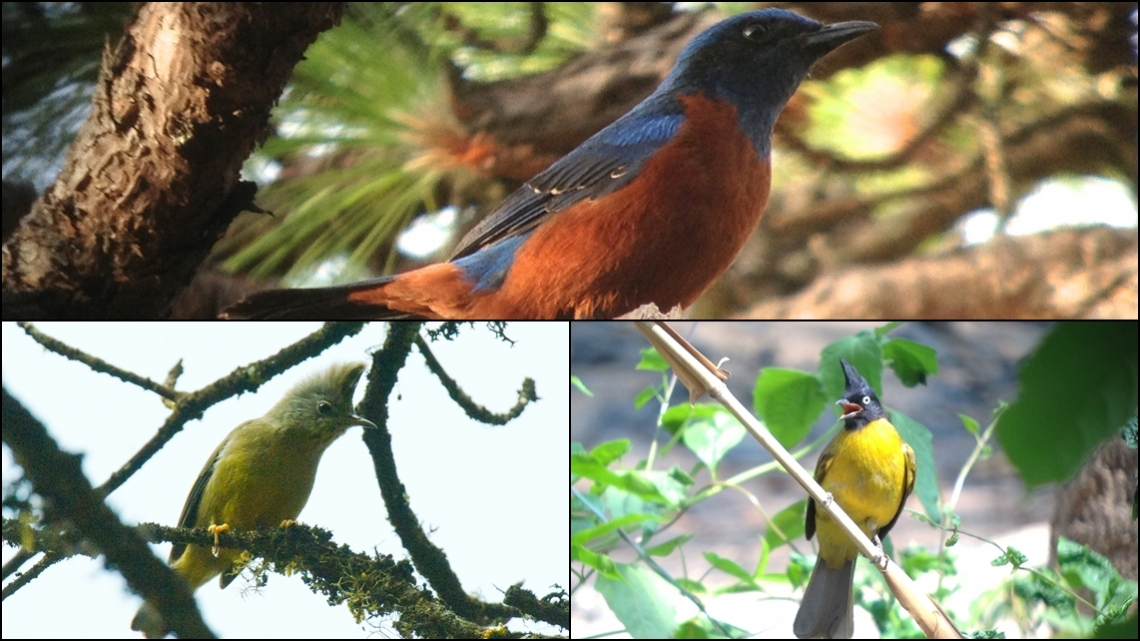Inle Lake is a freshwater lake located in the Nyaungshwe Township of Taunggyi District of Shan State, part of Shan Hills in Myanmar (Burma). It is the second largest lake in Myanmar with an estimated surface area of 44.9 square miles or 13.5 miles long and 7 miles wide (bigger than TH06 Bung Boraphet in Thailand) but up close it’s hard to tell where the lake finishes and the marshes start and one of the highest at an altitude of 2,900 feet (880 m).
During the dry season, the average water depth is 7 feet (2.1 m), with the deepest point being 12 feet (3.7 m), but during the rainy season this can increase by 5 feet (1.5 m). The watershed area for the lake lies to a large extent to the north and west of the lake. The lake drains through the Nam Pilu or Balu Chaung on its southern end.
Inle Lake ranks among Myanmar’s top five normal tourist attractions, also bird watcher need to come here for watching birds, which ensures that visitors come here in droves. The once-sleepy village of Nyaungshwe at the north end of the lake has grown into a bustling traveller centre.
Inle Lake Looking down over the lake from the Taunggyi road, Inle sits like a puddle on an enormous carpet of greenery. Dotted around the lake are the stilt-house villages and floating gardens of the Intha tribe.
Although the lake is not large, it contains a number of endemic species. Over twenty species of snails and nine species of fish are found nowhere else in the world. Some of these, like the Silver-blue Scaleless or Sawbwa barb, Cross-banded Dwarf Danio, and the Lake Inle danio, are of minor commercial importance for the aquarium trade. It hosts approximately 20,000 Brown-headed Gull, Black-headed Gull migratory in December to February, on this time you can enjoy them when you transfer by long boat, seagull will follow a boat waiting food from tourist.
Farming on the water is something the ingenious In-thar do well : they collect floating bunches of weeds, tether them to the lake bottom with bamboo poles and expand their length by patiently piling on silt and weeds. Thus they make floating vegetable beds that need not be watered, and besides could be towed away after removing the bamboo spikes. This hydroponics system of cultivating was devised by the In-thar centuries before modern science learned of its values.
Boats are the main means of transport around the lake – birder tend to explore on motorized long-tail boats but most Intha people get around using traditional flat-bottomed skiffs propelled by a single wooden paddle. The Intha technique of leg rowing – where one leg is wrapped around the paddle to drive the blade through the water in a snake-like motion – is unique.
The waters cool the surrounding air considerably. A mist hangs over the lake before sunrise and during the morning, and evenings can be surprisingly cold. Birding start on early morning till 10:00 am. (peak time to birding in Inle Lake, after then birds hiding in the tall bush), and then guide bring you to sing seeing around the lake. After lunch turn back to resort or continues to bird watching till evening.
Note : Don't forget bring a coat to keep off the wind chill on boat tours around the lake.
Star bird for here is Jerdon’s Bushchat, Rufous-rumped Grass-Babbler, Chinese Grassbird, Collared Myna. For Bushchat it's striking small chat, in South east Asia for here is easy to see. For here is also a slim chance of finding that most elusive of Asian ducks Baer’s Pochard, Tuffed Duck, Northern Shoveler, Ferruginous Pochard and Bronze-Winged Jacana, Pheasant-tailed Jacana, Gray-headed Swamphen, Indian Pond Heron, Javan Pond Heron while islands of emergent vegetation can hold Citrine Wagtail, White Wagtail, Rosy Pipit, Chestnuts-Headed Munia, Glossy Ibis, Openbill Stork while around the lake edge Greater Spotted Eagles, Western and Eastern Marsh Harriers regularly hunt over the reed-beds where Striated Grassbirds, Chestnut-capped Babbler, Yellow-eyed Babbler, Oriental Reed-Warbler, Manchurian Bush-Warbler and more.




